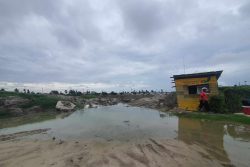Having pleaded guilty at the beginning of this month to committing misconduct in a public office, two members of London’s Metropolitan Police are currently awaiting their fates, which, according to the judge presiding over their case, more than likely will be jail terms. These two police officers have lost their jobs and attendant benefits and have become personae non gratae because they chose to engage in the illegal and particularly despicable trend of photographing a homicide scene and sharing the photos.
In this instance, the policemen had been assigned to guard the scene after the bodies of two murdered sisters were found in a north-west London park in June last year. Instead of doing their duty, they photographed the bodies and later shared the photos via WhatsApp to other police officers and members of the public. They were reported to the Independent Office for Police Conduct, suspended and later charged.
Shockingly, though both men were police constables, neither is of an age where such be-haviour could be deemed youthful inexperience. They are 47 and 33 years old; how could they not know better? Perhaps it is not a question of age, but rather one of integrity, which these two clearly lacked.
Unfortunately, there are many other law enforcement officers who have done, would do, and are doing the same all around the world. Sadly, we need not search the globe for other contemptible examples. They are right here in Guyana, demeaning the laws they are meant to uphold with the abhorrent taking and sharing of crime scene photos, sometimes even reportedly exchanging them for cash.
While the reprehensible sharing of the photographed dead body of Dr Colin Roach is the most recent example, this nauseating practice began here years ago, long before social media, with the advent of camera phones. Crime scene photos, among the tools used by investigators to determine who had committed the act, which should not leave that domain, were suddenly being blazoned on newspaper front pages. Often gruesome, apart from upsetting the sensibilities of readers not attuned to the macabre, they also added to the grief of the victim’s surviving family.
Questions that ought to be pondered include whether the publication of such photos resulted in crimes not being solved. Is it possible that publicising such photos could have led to copycat crimes? Has making these photos public some-how stoked killer/s need for notoriety? Of course there will be no answers, hence the exhortation to ponder.
Over the years, endless complaints had been made, but not once was a single police officer charged with regard to the publication of crime scene photos. If any were disciplined, that is yet to be made public. If anything, those engaged in this nefarious practice have been emboldened by the lack of any penalty and the problem has been magnified many times over owing to social media.
Nowadays, crime scene photos are sometimes online before the victim’s body is cold. WhatsApp and instant messages are the main avenues for this dastardly conduct, as it would likely be blocked on other platforms. Abominably, in a few instances, it is the way some family members or distant relatives of the deceased are informed.
It is worth stating here that there is absolutely no doubt that local police officers are responsible for the photographs of homicide victims being shared. Perhaps if they were made to face the music like their peers in England, they would think twice. And make no mistake, the people continuing the sharing and forwarding are just as odious as those taking the photos in the first place. None of them appear to stop and consider where those photos could end up or how they will be received. Their obvious glee in being part of what is often salaciousness is nothing short of vile.
In many jurisdictions in the world, there are laws barring the use and sharing of crime scene photographs. Because the disclosure of such images constitutes the unwarranted invasion of the victim’s or surviving family members’ privacy, their viewing is limited to the investigating team and the coroner. If there is criminal action, then they may be used in court, but even that is not a given.
While there might not be direct legislation barring the exposure of homicide photos here, surely the code of ethics which governs the Guyana Police Force militates against officers’ involvement in this immoral activity that has become commonplace and viral. Why are actions by officers which sully the reputation of the force being overlooked? Where is the confidentiality that is a necessary part of good policing?
The erosion of public confidence in the Guyana Police Force and the concomitant lack of respect are a direct result of the actions of more than a few of its officers. At the end of last month, Police Commis-sioner (ag) Nigel Hoppie voiced plans to review and amend the force’s Standing Orders and Standard Operating Procedures in consonance with best practices and international standards. The time to do that was yesterday. The bad apples are spoiling the entire bushel.






